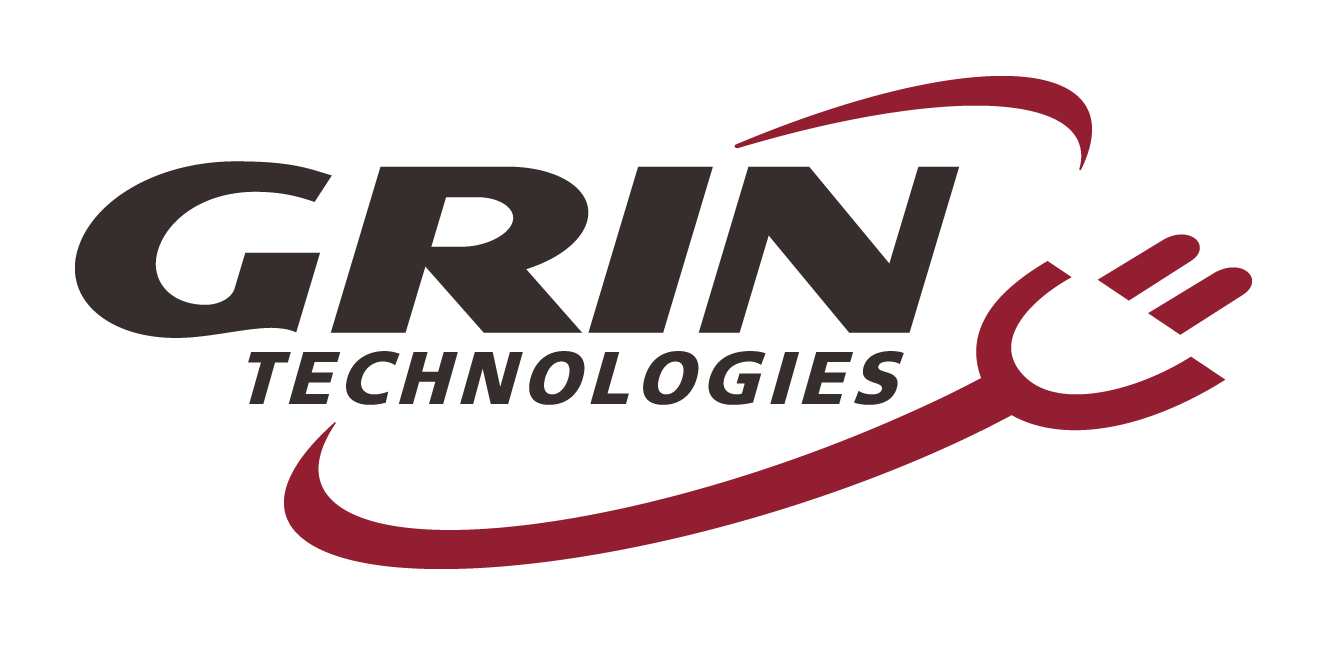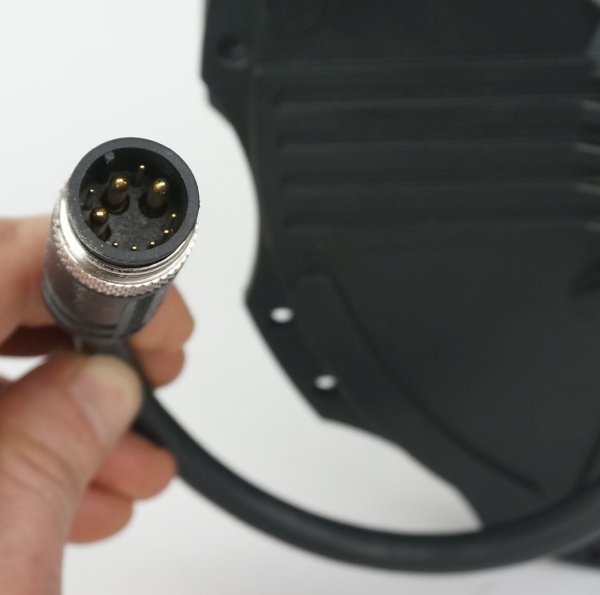FH212-RH212

Background
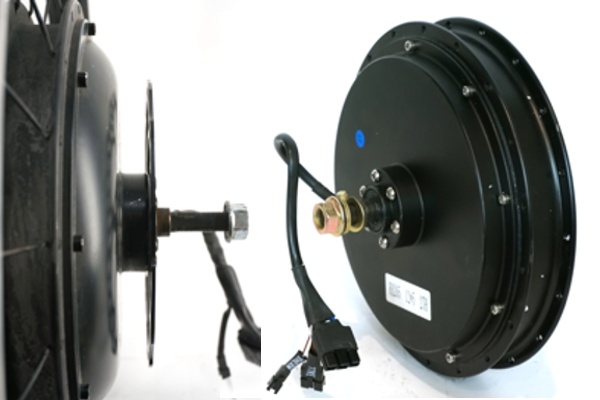
 The FH212 (front) and RH212 (rear) motors are an export-model motor from Nine Continent, one of the largest supplies of generic hub motors used in mass-produced chinese ebikes and scooters. Nine Continent has been around a long time and was one of the earliest suppliers of the generic 205mm direct drive motors that swept across the ebike and scooter scene in the mid to late 2000's.
The FH212 (front) and RH212 (rear) motors are an export-model motor from Nine Continent, one of the largest supplies of generic hub motors used in mass-produced chinese ebikes and scooters. Nine Continent has been around a long time and was one of the earliest suppliers of the generic 205mm direct drive motors that swept across the ebike and scooter scene in the mid to late 2000's.
In 2011 we had them improve their original FH205 motors with thinner 0.35mm laminations, a thermistor temperature sensor, and statorade injection ports which we sold for many years as the 9C+ 2705, 2706 etc. But the mechanical design of these motors was a poor fit on bicycles, with inadequate disk rotor clearance, a vulnerable end cable axle exit, and no support for cassette freehubs. In 2018 they came through with a slightly larger FH/RH212 motor based on a different core structure and design that better conformed to our bicycle fitment requirements.
Features
These motors have a number of improvements over the generic Chinese looking DD hub motors:
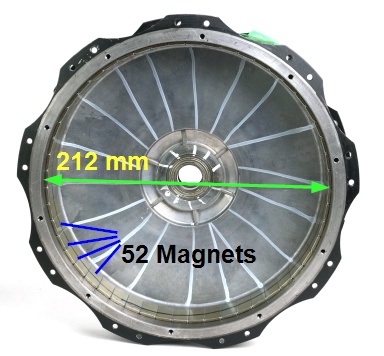 |
More TorqueThe rotors in these motors are slightly larger in diameter, 212mm vs 205mm, allowing for more magnets (26 pole pairs vs 23) and a great torque generation per magnet. That results in a more powerul and torqy hub than a 205mm motor of the same width |
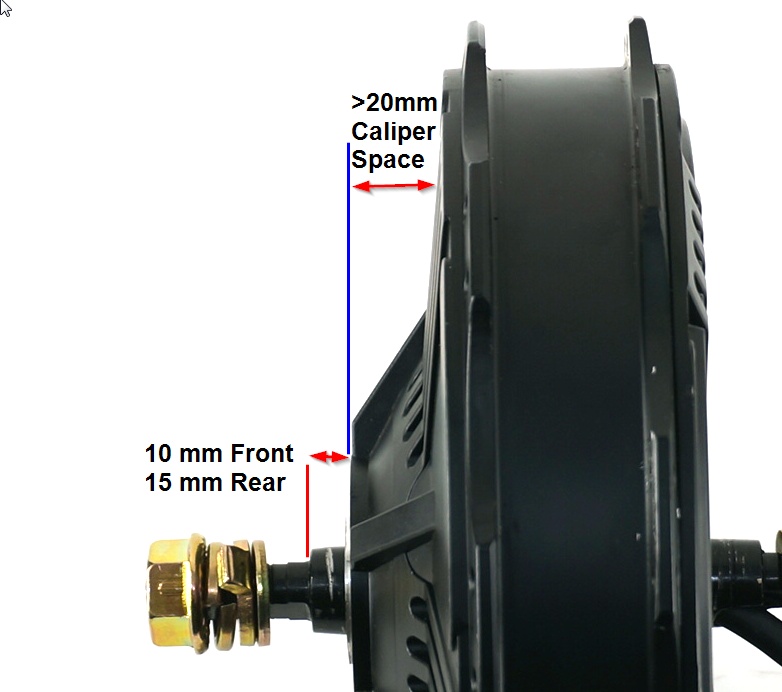 |
Plenty of Disk Rotor ClearanceThe shape of the motor shell provides much more room for disk calipers to fit witout rubbing against the side plate and requiring spacers and shims to align. As well, the position of the disk rotor is where it needs to be (10mm on the front, 15mm on the rear) |
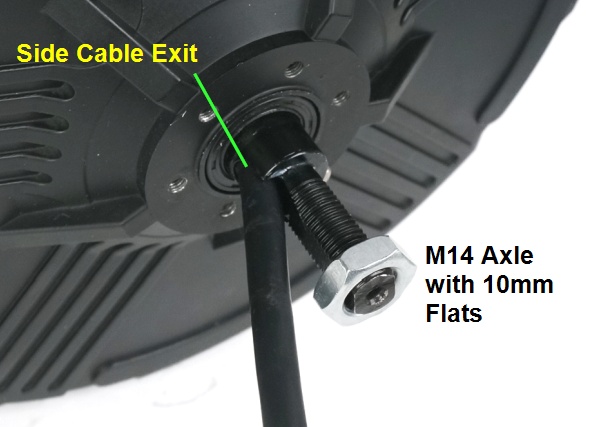 |
M14 Axle with Side Cable Exit14mm axle has much greater spinout resistance both with and without torque arms than the 12mm axles which were more common. This is especially important in our Grin setups that make extensive use regenerative braking.
|
|
|
L10 ConnectorThe phase wiring on these motors is terminated with the 10 pin high current locking motor connector which integrates the hall wires, temperature sensor, and phase leads into a single reliable and water-tight plug. |
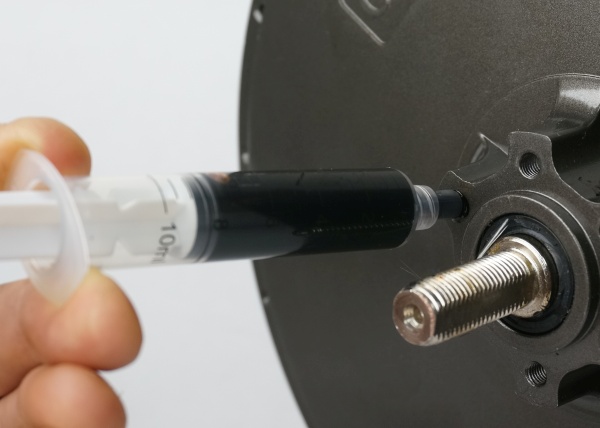 |
Statorade Compatibility:The sideplate is well sealed and has an access port through one of the disk holes for injecting statorade to improve thermal performance and heat dissipation. |
 |
Cassette Freehub:Most importantly, the rear motors do not have a threaded freewheel but use a proper Shimano HG compatible cassette freehub system, allowing you to use standard 8, 9, 10, and 11 speed mountain cassettes for use with modern drivetrains. Most generic motors still use a threaded freewheel, and are sized for just 6 or 7 speed freewheel clusters. |
Applications and Uses
This motor is well suited to ebike builds needing a powerful and reliable direct drive hub motor at value level pricing but still with decent bike compatibility. For a good look at example bike builds using this motor have a browse of our Customer Project Gallery. The weight penalty of 6.5kg is significant however, making it not for everyone.
Winding Speeds
We stock the FH/RH212 motors in two winding speed options which to cover most bases; a standard 7.5 turn wind (8.1 rpm/V), and a faster 6 turn wind (10.2 rpm/V) . In general the standard wind is primarily used by 26" and larger wheels while the faster wind is for smaller 20" wheel sizes, but it is perfectly fine to choose to lace any winding in any wheel size depending on your desired speed for a given battery voltage. The fast winding option is especially good for those wanting a peppy system while sticking with the common 36V battery packs. The table below shows the unloaded speed of each winding in different wheel sizes and battery voltages as a handy reference.
| Standard Wind (8.1 rpm/V) | Fast Wind (10.2 rpm/V) | |||||
| 20” Wheel | 26” Wheel | 29” Wheel | 20” Wheel | 26” Wheel | 29” Wheel | |
| 36V Battery | 29 kph | 38 kph | 42 kph | 35 kph | 46 kph | 50 kph |
| 48V Battery | 38 kph | 49 kph | 55 kph | 47 kph | 61 kph | 68 kph |
| 52V Battery | 41 kph | 53 kph | 59 kph | 51 kph | 67 kph | 74 kph |
| 72V Battery | 59 kph | 76 kph | 85 kph | 72 kph | 92 kph | 103 kph |
The actual cruising speed under any kind of load is going to be less than this value, and we recommend using our motor simulator for exact performance details of any given combination of motor, battery voltage, and controller model.
Motor Power
The power output capability depends on the RPM at which the motor is being run, the amount of air cooling available, the ambient temperature, and how long you consider it to go. The table below shows the expected power capabilities assuming room temperature atmosphere and a passing airflow consistent with the wheel being laced in a 26" wheel. The continuous rating is the power that will result in a steady state motor core of 110 oC, while the 5 minute rating is the power level it can sustain for 5 minutes starting from 60oC before the core reaches 110 Celsius.
| Continuous Power | 5 Minute Power | |||
| Wheel Speed | No Statorade | With Statorade | No Statorade | With Statorade |
| 100 RPM | 300 W | 400 W | 550 W | 650 W |
| 200 RPM | 645 W | 925 W | 1085 W | 1300 W |
| 300 RPM | 1000 W | 1485 W | 1625 W | 2000 W |
| 400 RPM | 1360 W | 2080 W | 2150 W | 2680 W |
For a more detailed understanding we recommend using our motor simulator or trip simulator applications to properly predict the capability of this motor in any specific usage scenario.
Torque Arm and Axle Strength
The RH212/FH212 motors have a cable that exits the side of the axle rather than through the end of the axle which makes it more convenient for changing hardware and installing torque arms. However, diagonal hole that passes the cable here substantially weakens the axle's ability to transmit torque.
It is essential when installing the motor to ensure that most of the torque tranmission takes place on the side of the axle that is solid all the way through, and that means mounting to the torque arm on the right (drive side) side of the rear motor or the left (disc side) of the front motor.
If for some reason the mechanical details of the bike make that impossible to attain and the torque arm only fits on the cable exit side, the best way to ensure a reliable motor is to tighten the nut on the solid axle side to a full 80 Nm or torque and limit the maximum motor torque to 60 Nm via the phase current limit settings of the Phaserunner or Baserunner motor controller.
Documents
Videos
Introduction to the RH212 and FH212 direct drive motors
This video introduces the 212 motor series from Nine Continent. These have become our preferred direct drive hub motor option for ebike conversions since they check off all the right boxes:
1) Paired spoke holes (allows radial lacing)
2) Side cable exit
3) 0.35mm laminations
4) Statorade injection port
5) Cassette freehub on rear
6) Correct disk rotor alignment and caliper clearance
7) L10 connector with temperature sensor
8) Proper 100mm / 135mm axle OLD's
9) Entry level price point
There are other direct drive motors we carry for more specialized needs, like the Grin All Axle motor for single side / thru axle systems or lightweight builds. But for regular ebikes and cargo bikes where weight is not a deciding factor, the FH212 / RH212 is our go-to recommendation these days. They are both powerful and reliable.
They are available as raw motors here:
https://ebikes.ca/shop/electric-bicycle-parts/motors.html?motor_manufacturer=74
and as part of a complete kit system here:
https://ebikes.ca/shop/electric-bicycle-kits.html?motor_manufacturer=74
Disassembly of an RH212 Direct Drive Ebike Hub Motor
This video shows the process for opening up a typical direct drive ebike hub motor for service and repair work with the use of a gear puller. The process is very similar for most of the direct drive hubs currently on the market, although a few manufacturers like BionX and TDCM tend to use a press-fit on the motor shell instead of fasteners. (see https://youtu.be/Wc8OJtFRUng?t=170 )
Without a gear puller you can usually still open the motor by using your body weight to push on the rotor while the axle is against the floor. We don't recommend using flathead screwdrivers or small crowbars to 'pry' the side covers off as it is very easy both to dent the surface of the aluminum plats and also to nick and sever copper wires in the stator.
Availability
The RH212 and FH212 motors are available as stand alone hubs, or as part of a complete kit with a controller, battery etc.
Issues
These motors have been relatively robust and reliable, and a solid mainstay of our conversion kit offerings for many years. We were nervous about the quality of the generic cassette freehub but they've proven to be almost completely trouble free. However we have seen a few failures related to the generally poor metalurgy of low cost motors.
| Cracked Casings | The first production batch of these motors was a bit vulnerable to cracking right along the rotor shell, especially with high tension wheelbuilds. It seems that the stress on the motor flanges could be high enough to crack open the die casting. In 2019 Nine Continent updated the mold tooling so that the metal was thicker in the shell, which all be stopped these incidents but also added about 400 grams to the total mass. |
| Broken Axle | The axle exits through a diagonal channel on the disk side which weakens the metal, and if all the motor torque is transfered through the cable side it can shear. Most of the time this has happened with customers running higher power controllers than our Phaserunner / Baserunner, and with the torque arm on the cable side. We highly recommend installing the torque arm on the cassette side of the motor, even if it can be more awkward around the derailleur. |
| Slipped Magnets | There have been 2 of failures where the motor magnets came unglued from the rotor shell. These were both in motors exposed to high temperatures, and were likely devices that had inadequate glue application at the factory. |


 Canadian
Canadian